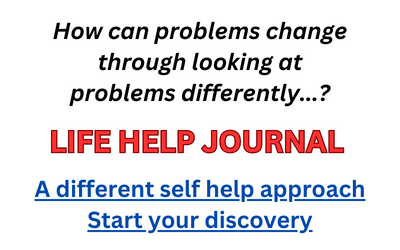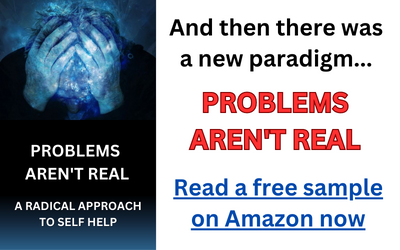Receiving a terminal illness diagnosis is a common fear — it’s one reason why some people avoid medical care entirely. Even for those people who don’t actively fear a terminal diagnosis, most would surely sympathize with the person in such a situation.
I sympathize as well, not only with the person who gets this news but for their loved ones too. If nothing else, a scenario like this represents a significant jolt.
So what should be done about it? Here’s my advice for coping, at least initially: look inward and consider our thought streams in particular.
In the midst of a terminal illness we should consider our thought streams? Seriously?
Absolutely yes.
The majority of our suffering in such a situation, and some life teachers say all of our suffering in such a situation, will be the result of mental activity. Most people will believe that the terminal diagnosis itself would be the cause of any emotional anguish they may experience. This is a reasonable outlook… and it is also wrong.
The diagnosis would cause no emotional anguish whatsoever. Mental interpretations — thought streams or mental stories — about the diagnosis would cause enormous emotional anguish, if these interpretations were accepted as truth.
Try the following experiment:
Imagine yourself in a setting where a doctor tells you that you have a disease that will soon end your life. As much as you’re able, feel what this would be like.
Now run the visual above again but this time include this factor: you are completely clear of thought. As the doctor gives you your diagnosis no thinking takes place. How would you feel then? How would you feel in comparison to the previous visual?
Some teachers advocate “controlling” or eliminating thought. I do not. I believe it is very difficult, and even impossible, to control or eliminate thought. If controlling thought were easy humans would suffer far less than they actually do.
The good news is we don’t have to, or even want to, control or eliminate thought. Let thought come. But when it does come treat it differently than most people do.
When an upsetting thought enters their awareness most people engage the thought in one of two ways: they accept it as truth, or they attempt to push it away. Both reactions amount to grabbing, so to speak, the thought. (People “grab” emotions in a similar way.)
Grabbing thoughts, and emotions, shackle you to them — and neither one of you is happy about it. Thoughts and emotions, like most else, want to be free. If we hold them captive they grow in intensity. If, on the other hand, we allow them their freedom they stay briefly, and then move on.
In the case of an illness diagnosis, or any other perceived stressor, allow whatever thoughts and emotions that show up to be. Don’t push them away, don’t accept or reject the truth of them.
No grabbing.
Just be with them. Yes, this will quite possibly be very uncomfortable — at least for a time. But shortly the thought and / or emotion will go and take the discomfort with it. This is, simply put, the way it works.
Try it for yourself and see.
There will surely be many emotional response levels to something like a terminal diagnosis. Bear in mind however that all suffering is internal and comes from mental activity. It is not — not ever — the external situations we face that cause us to suffer. It is the mental stories that accompany these situations.
Allow whatever thoughts and / or emotions that come up. Be with them; sit with them. And then they will go.
Another way to describe this is to observe thoughts and emotions, and do nothing but observe: don’t analyze or condemn or critique in any way. Take on the role of neutral watcher, and simply observe (or watch) thoughts and emotional responses as they come up. This requires a degree of awareness but is certainly not impossible — or even difficult, for that matter — and is a very powerful method for getting clear of unconscious attachment to thoughts and emotions.
Learn more about observing and allowing as an effective coping process Here and Here.

